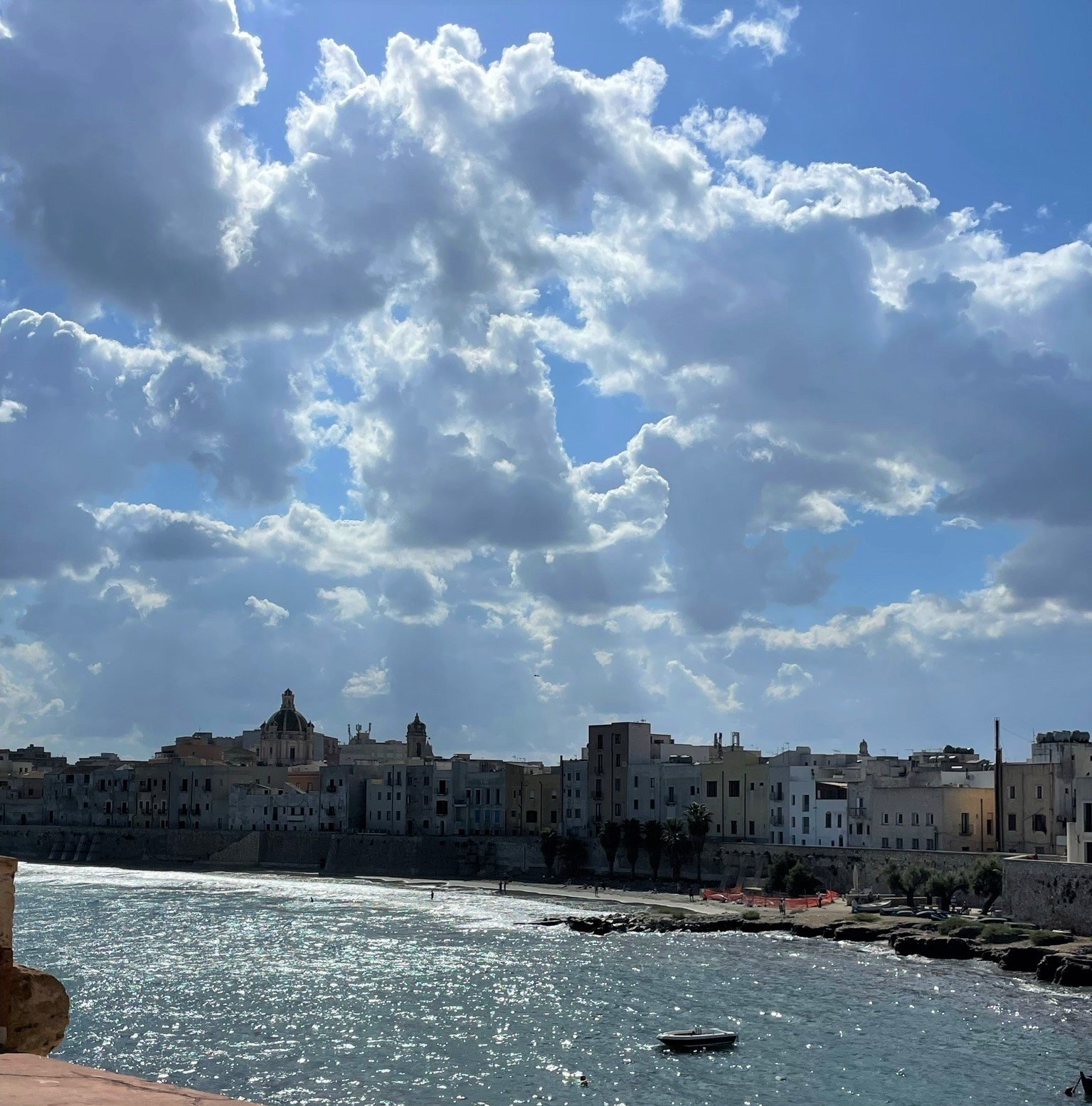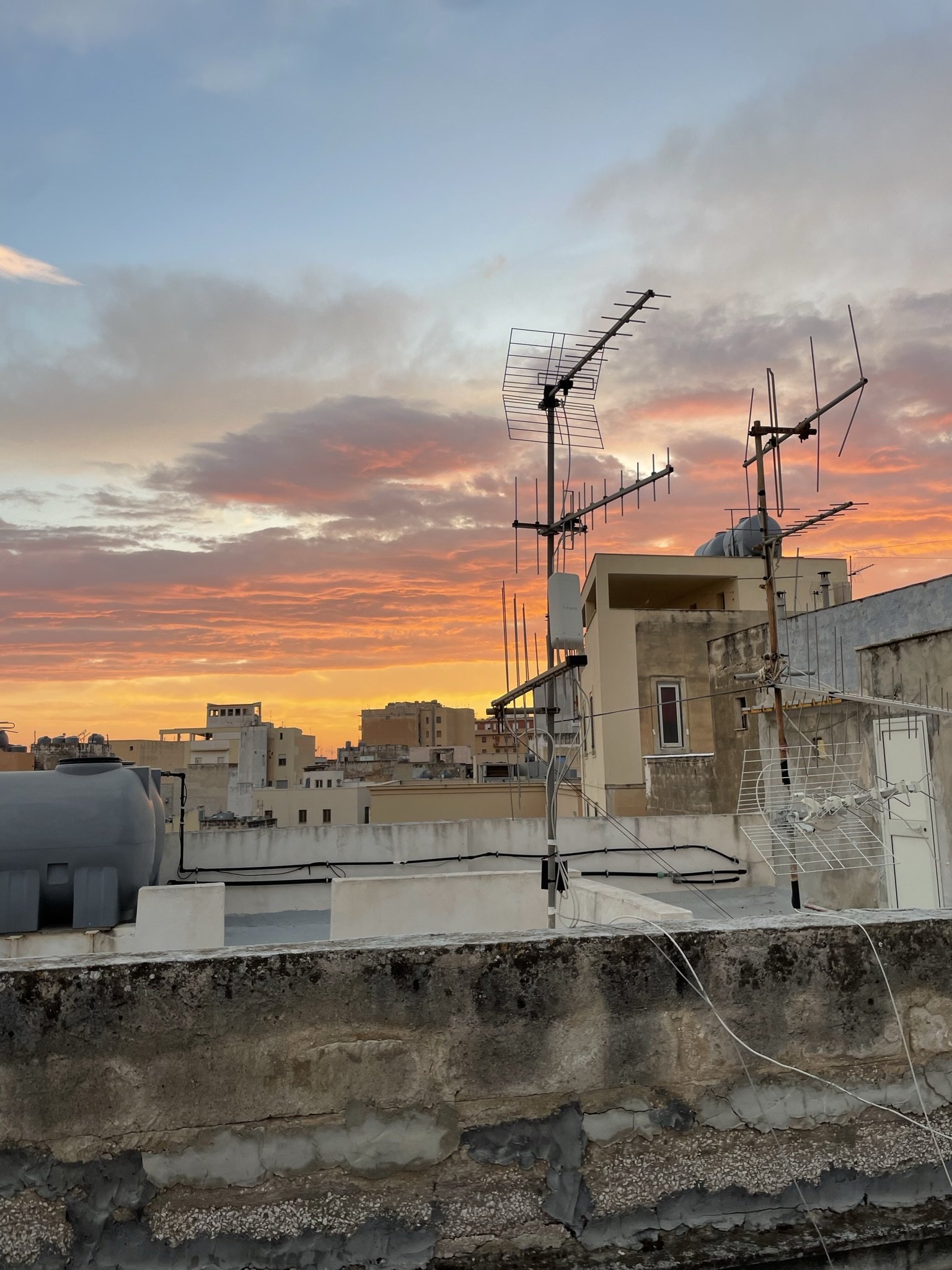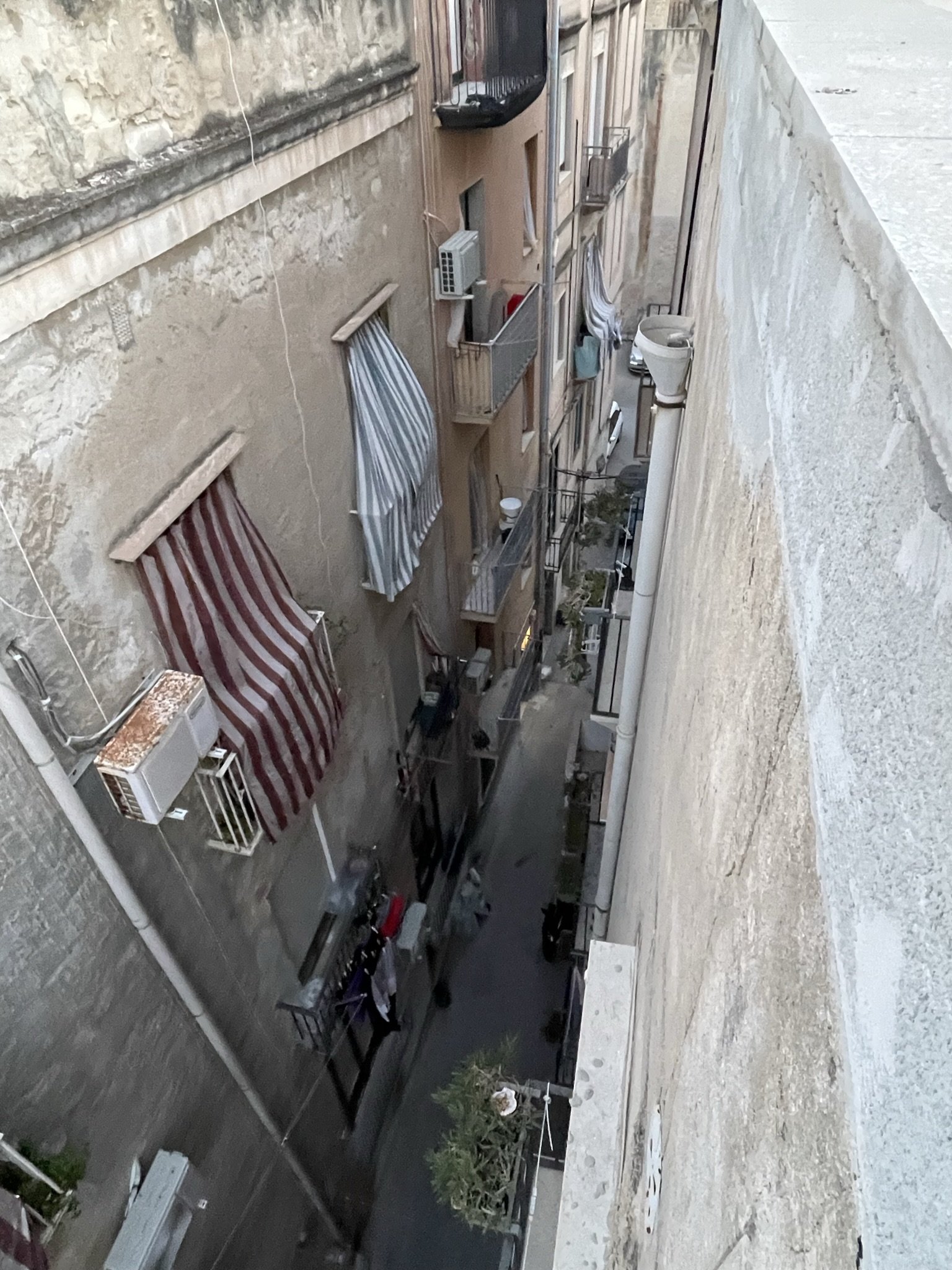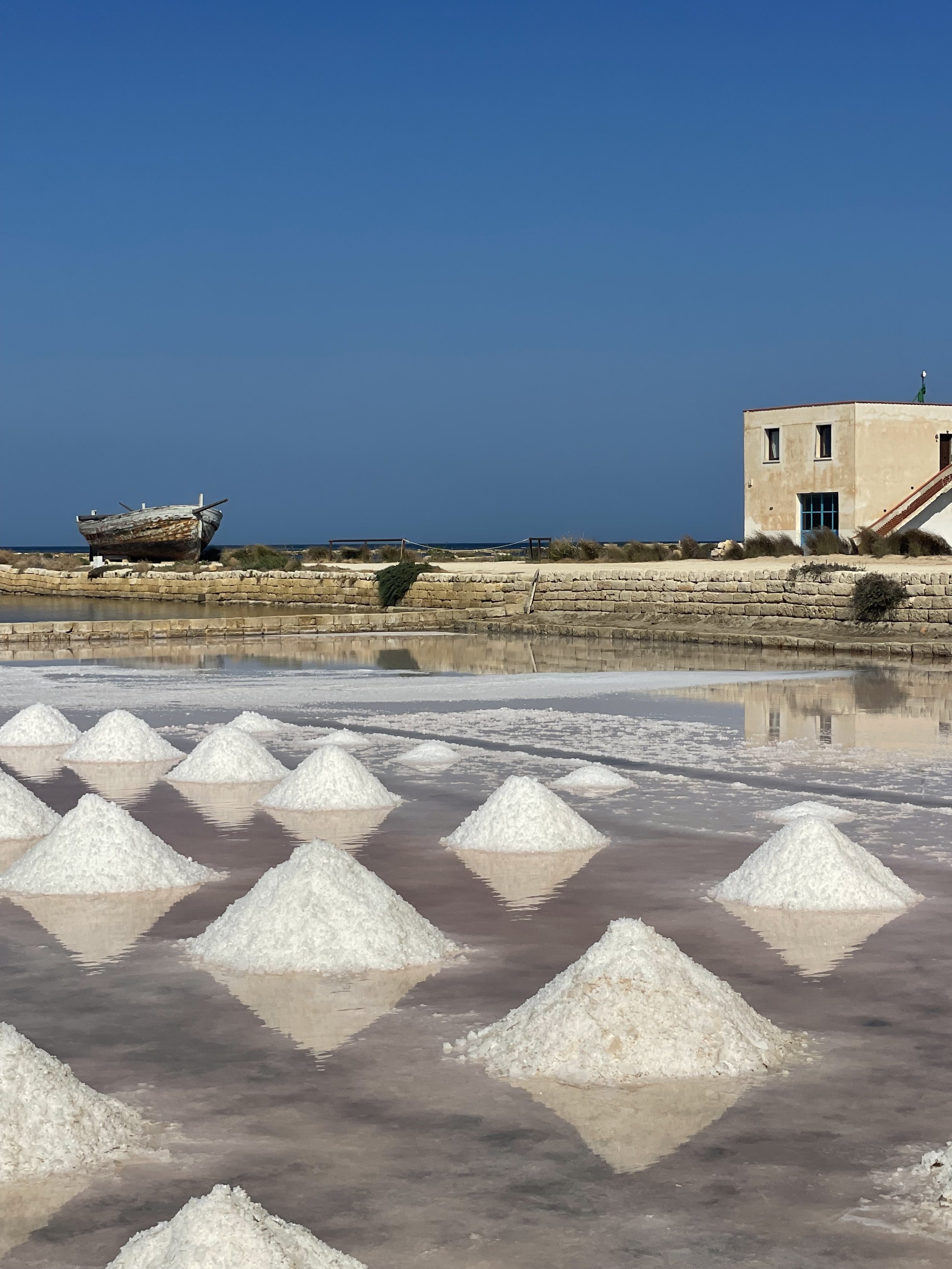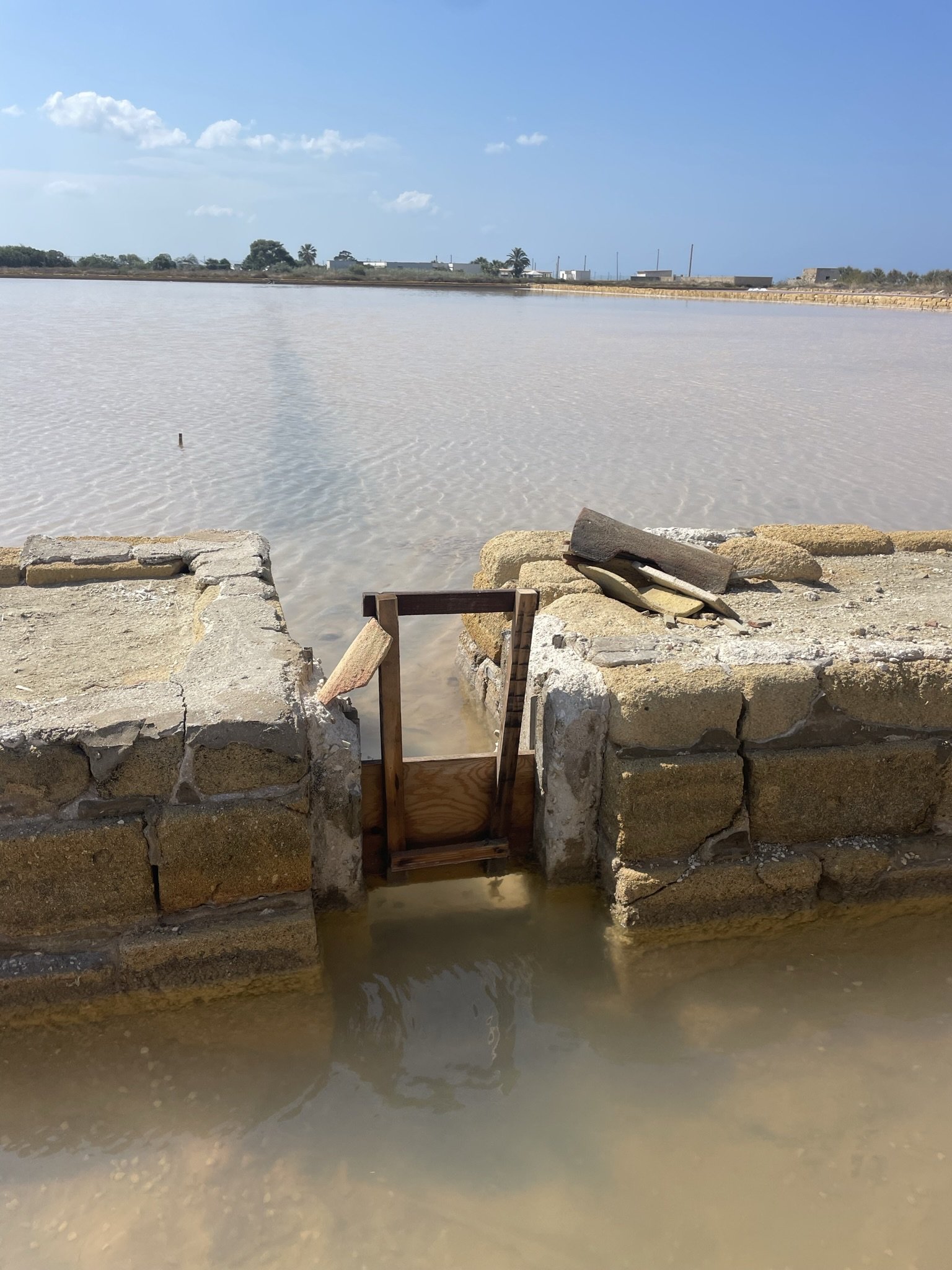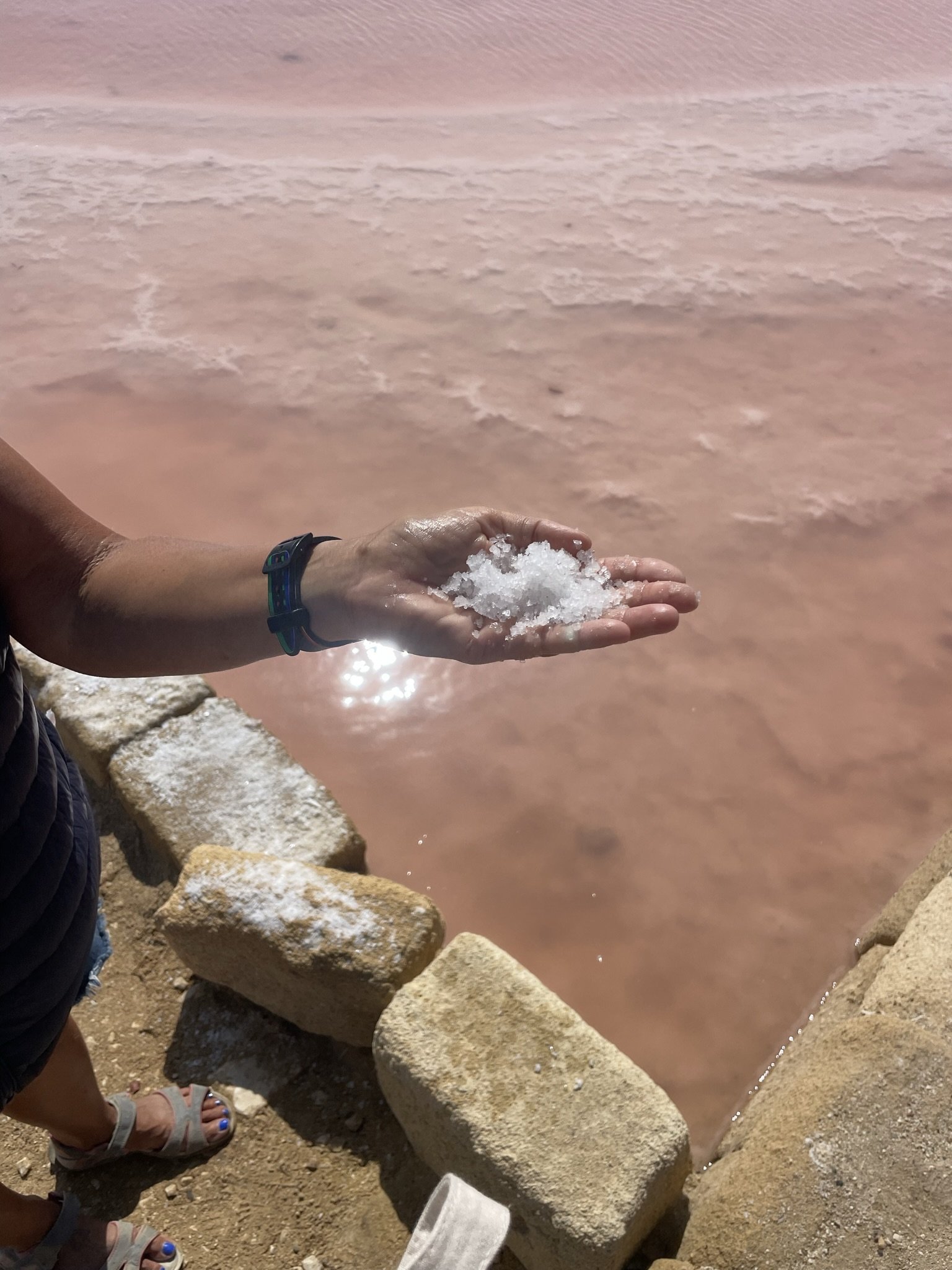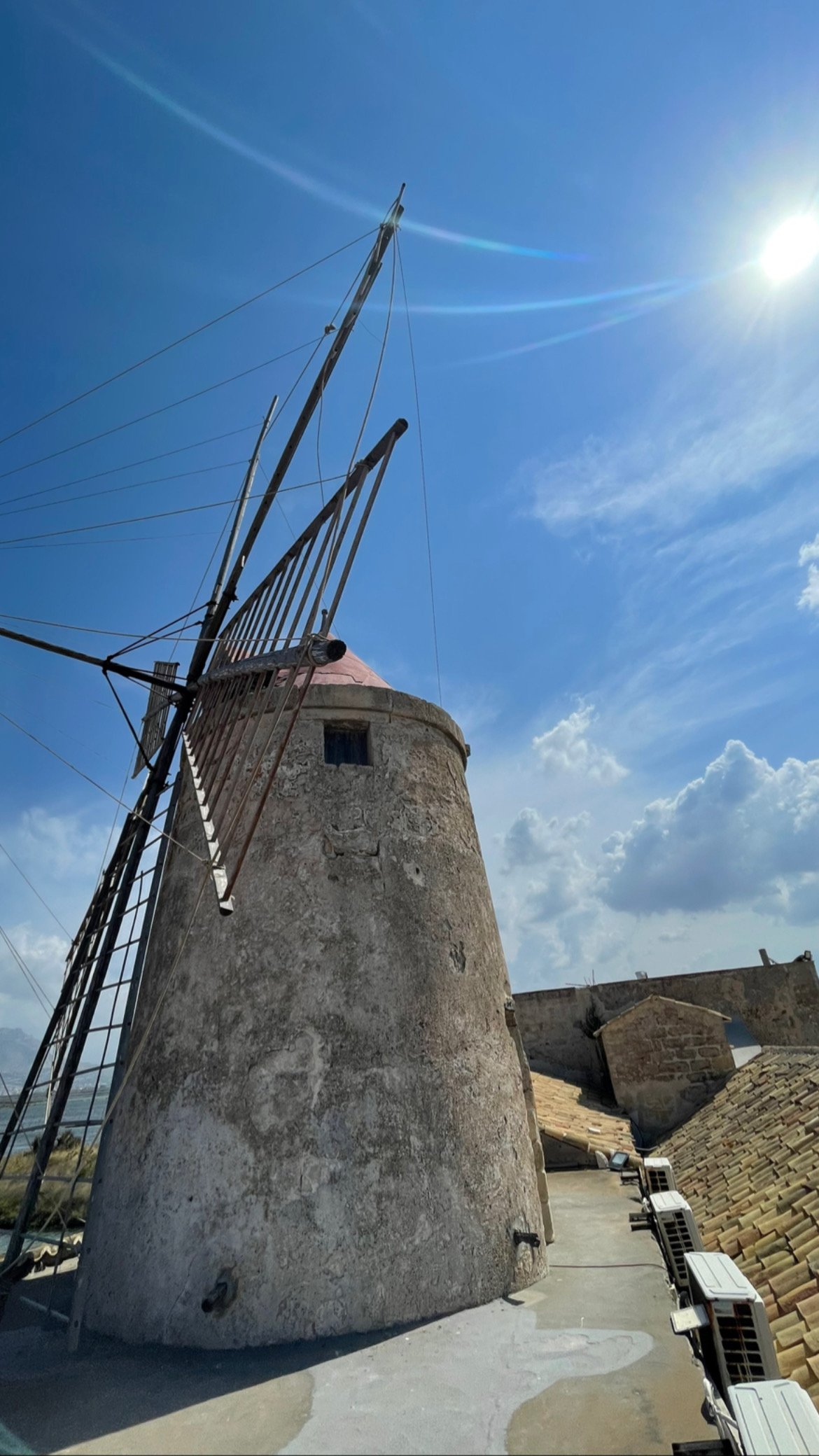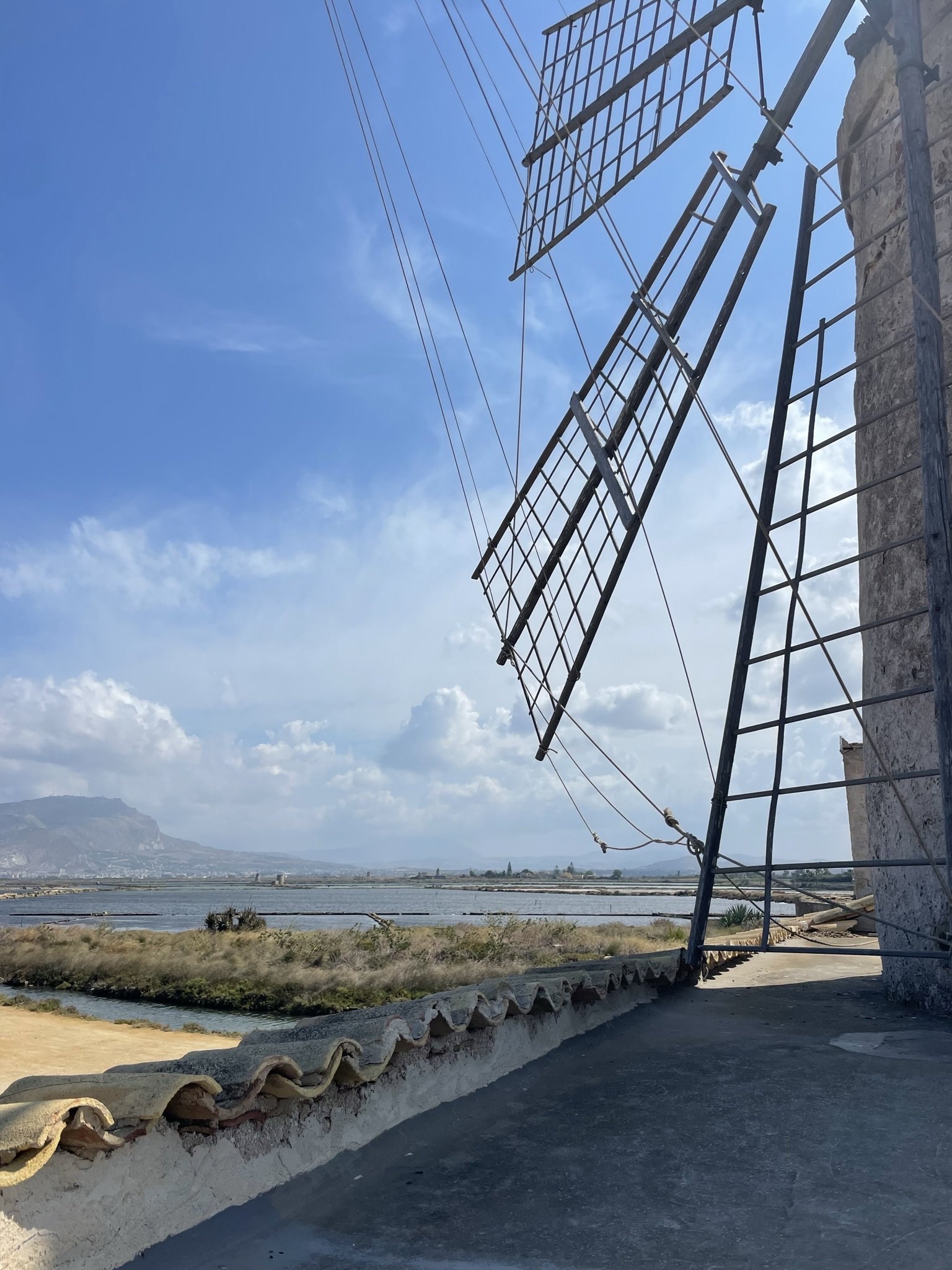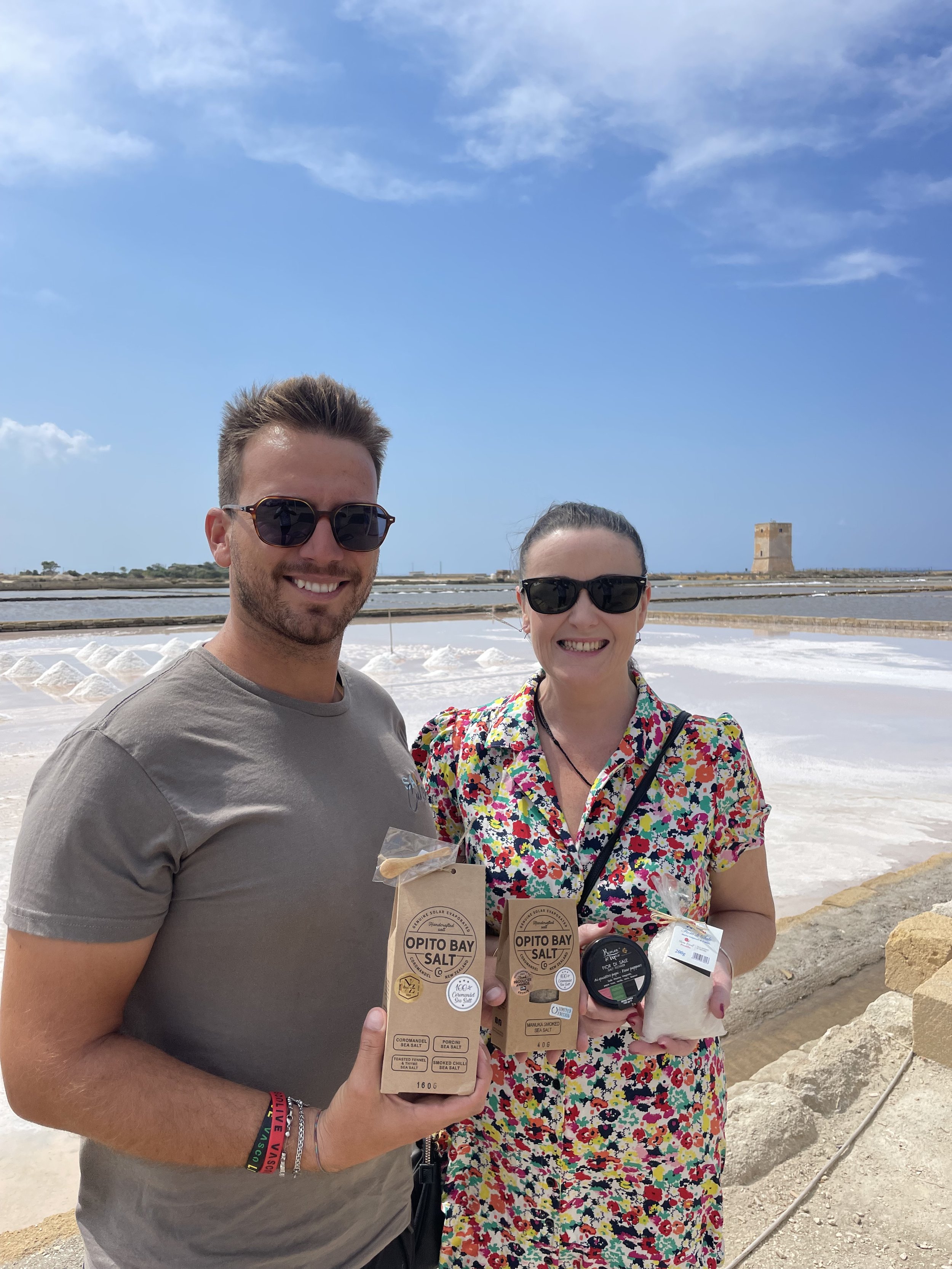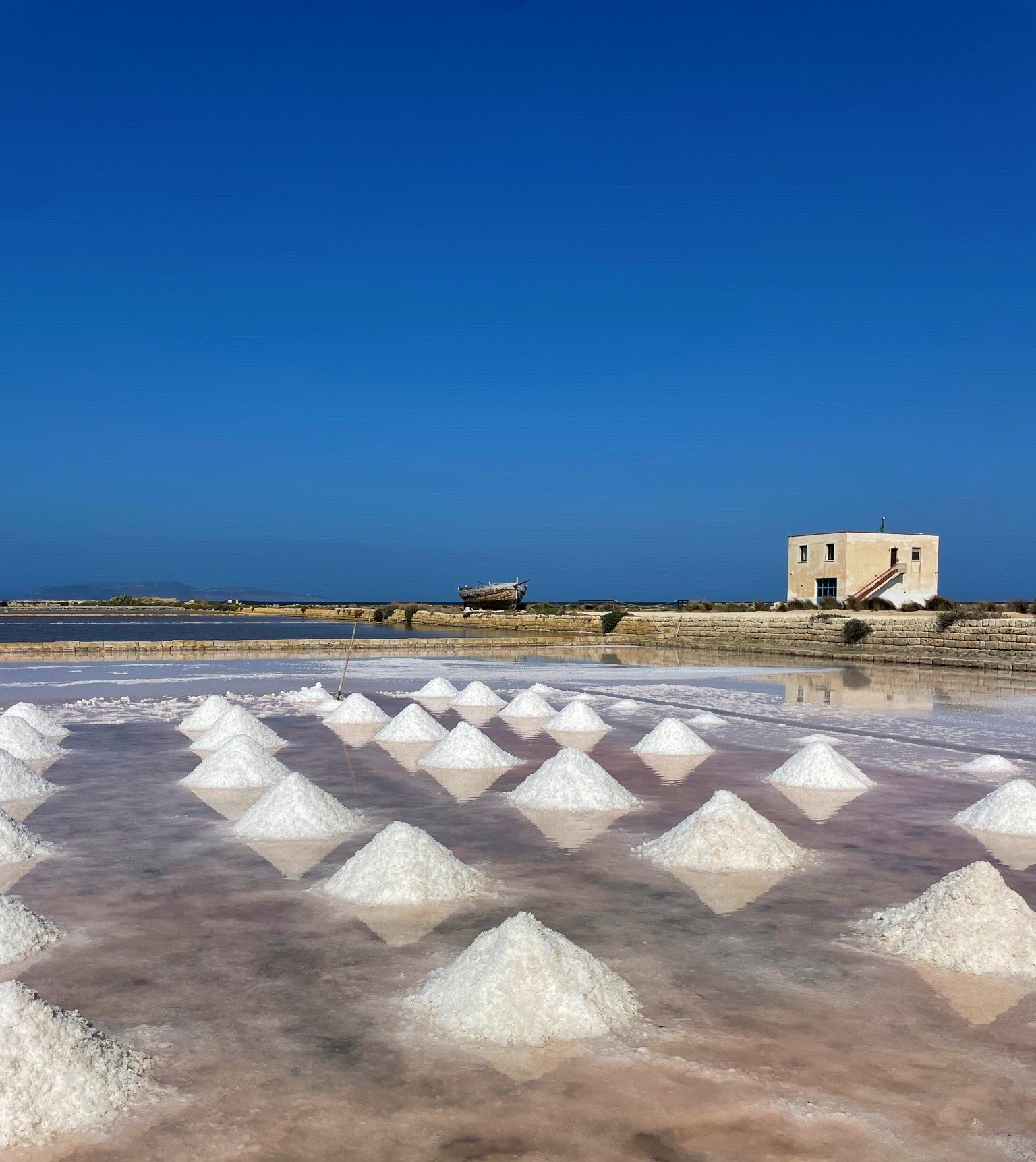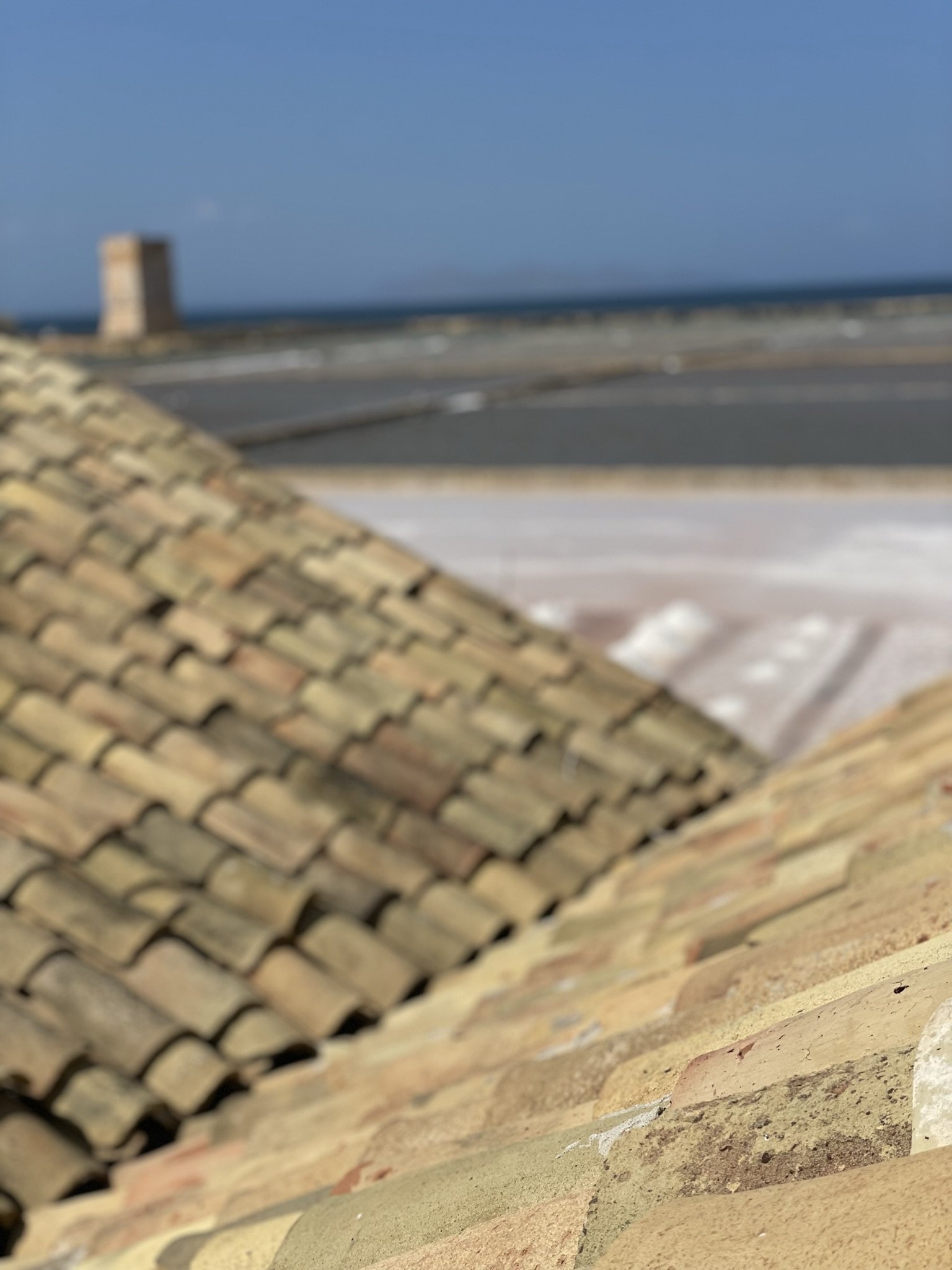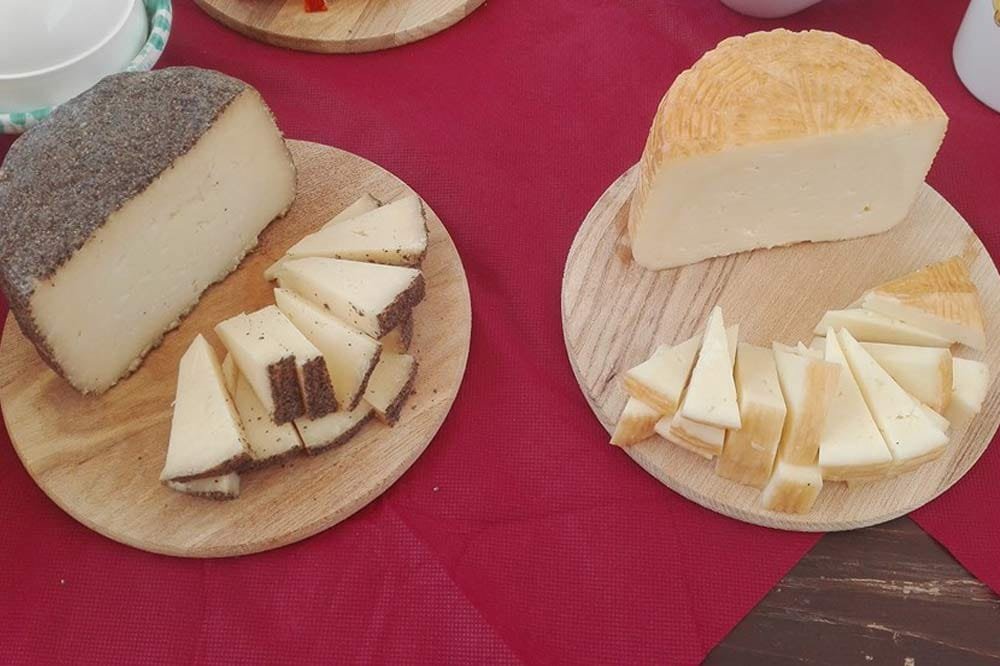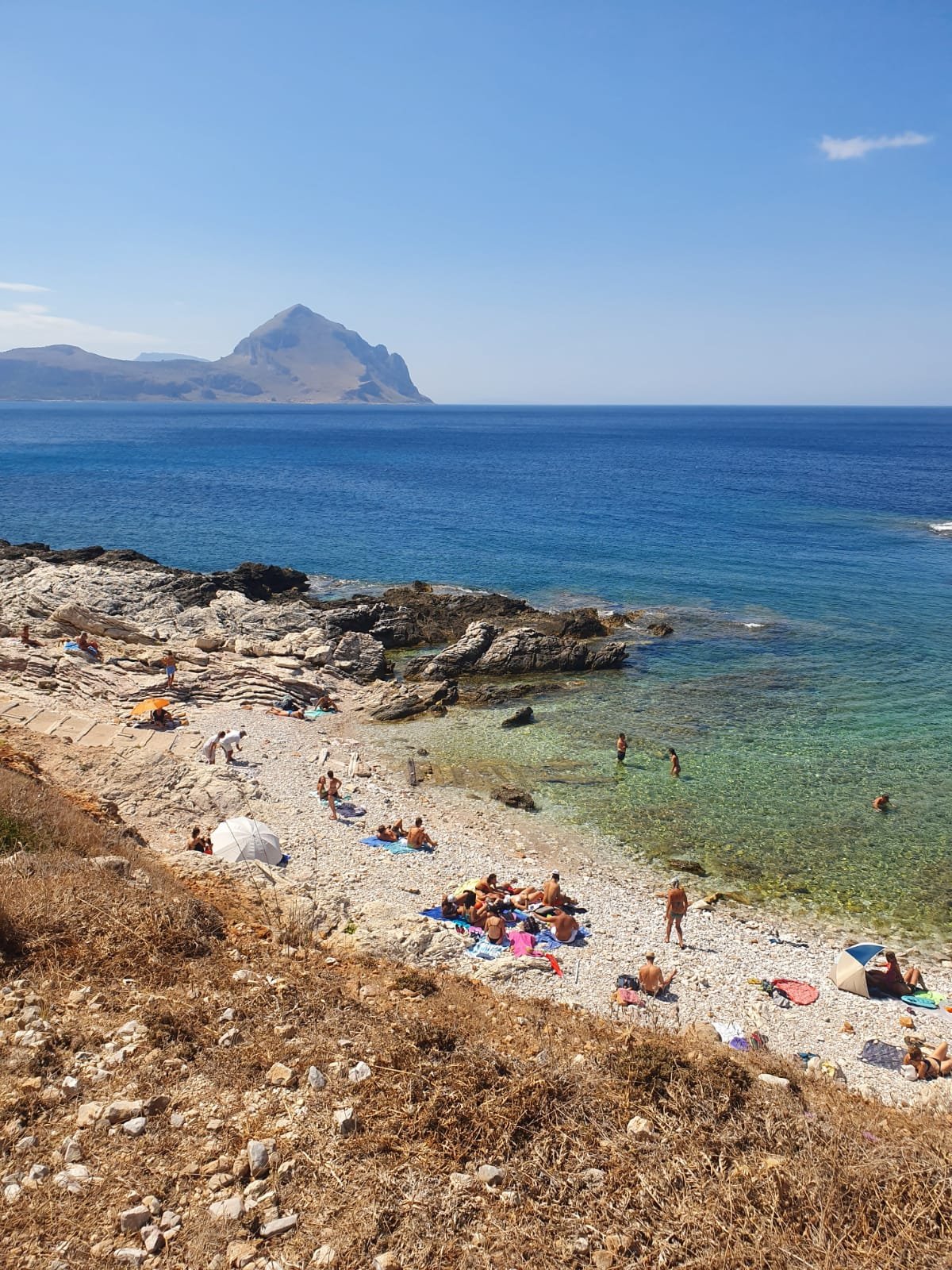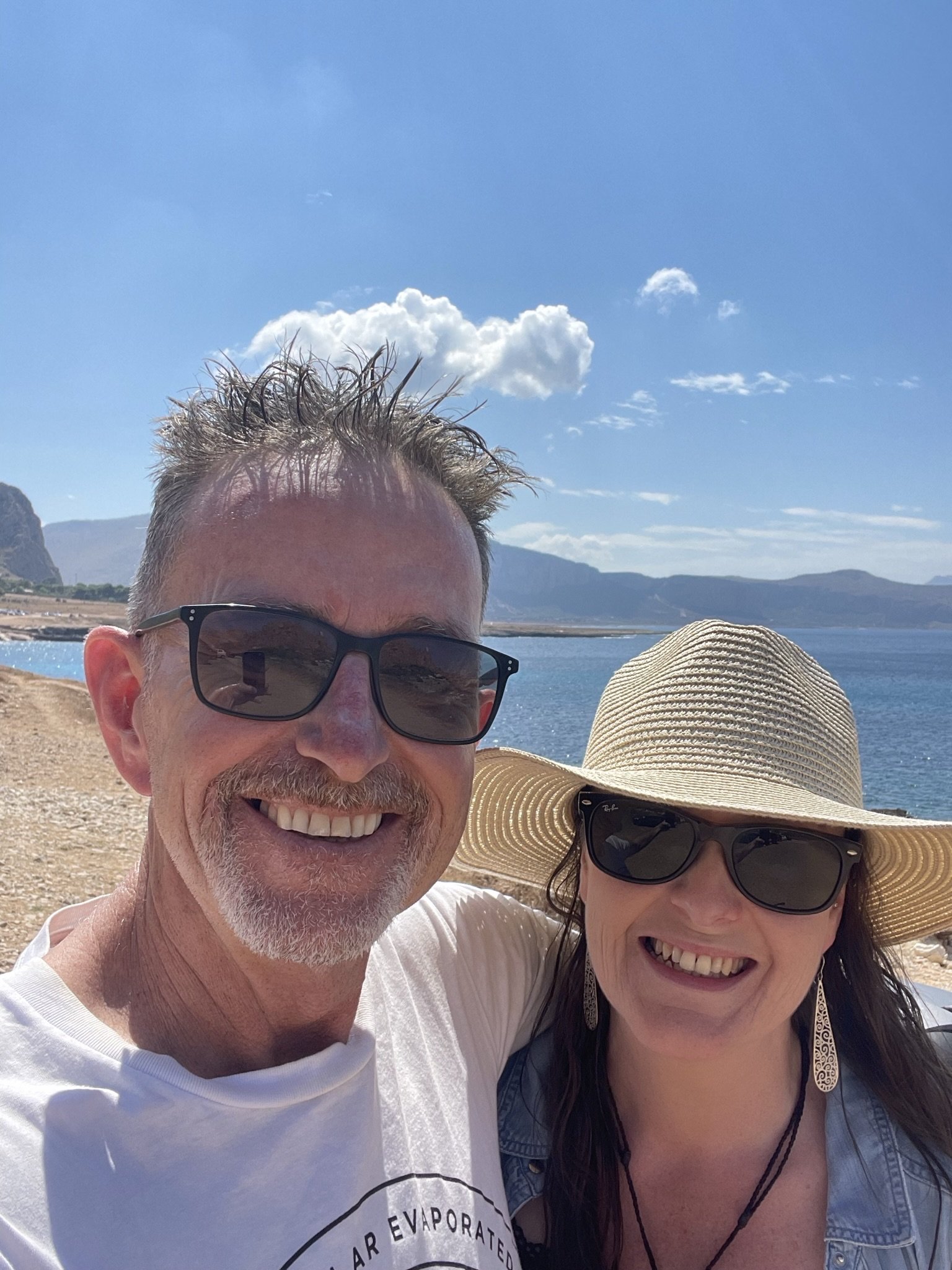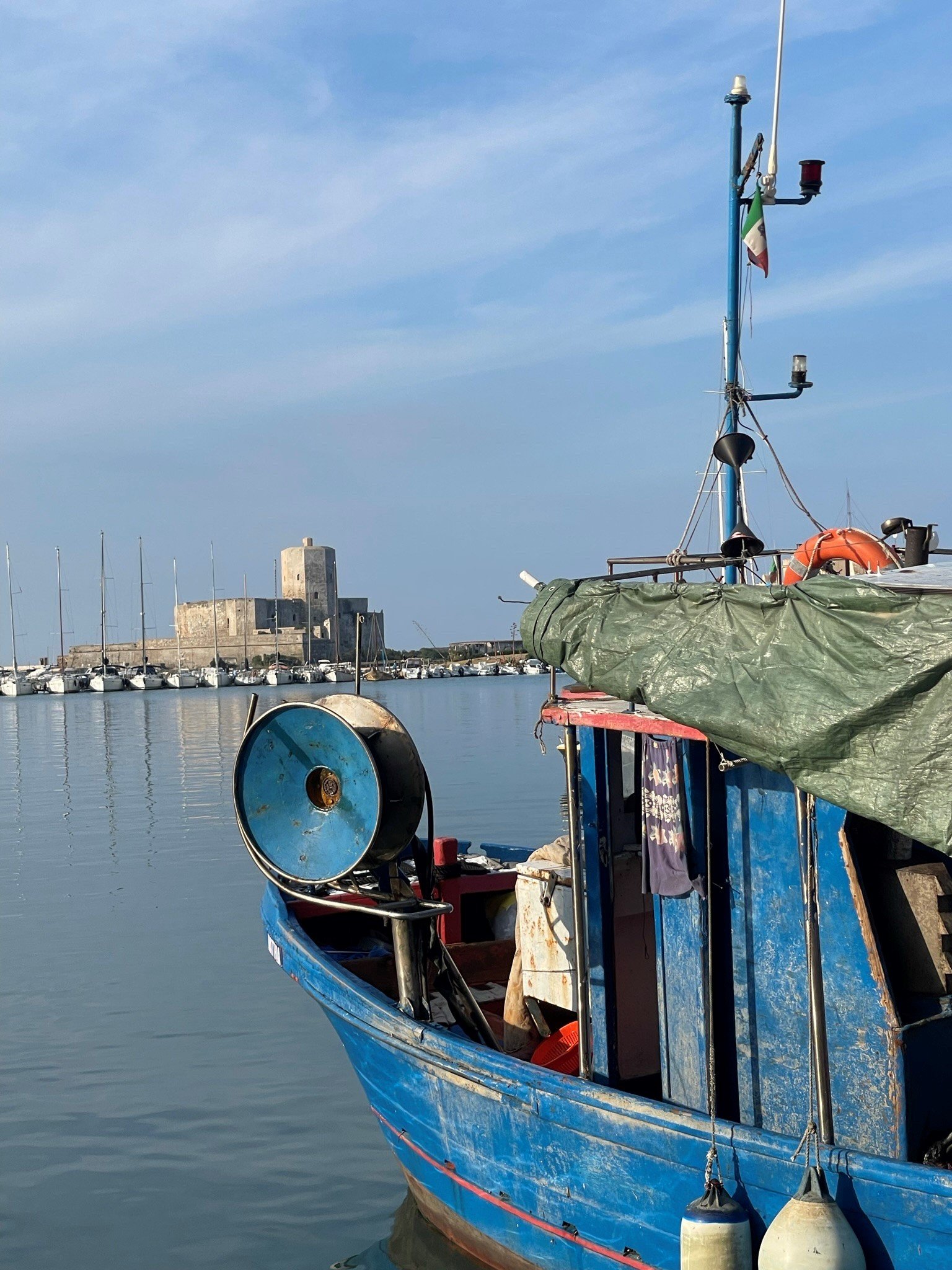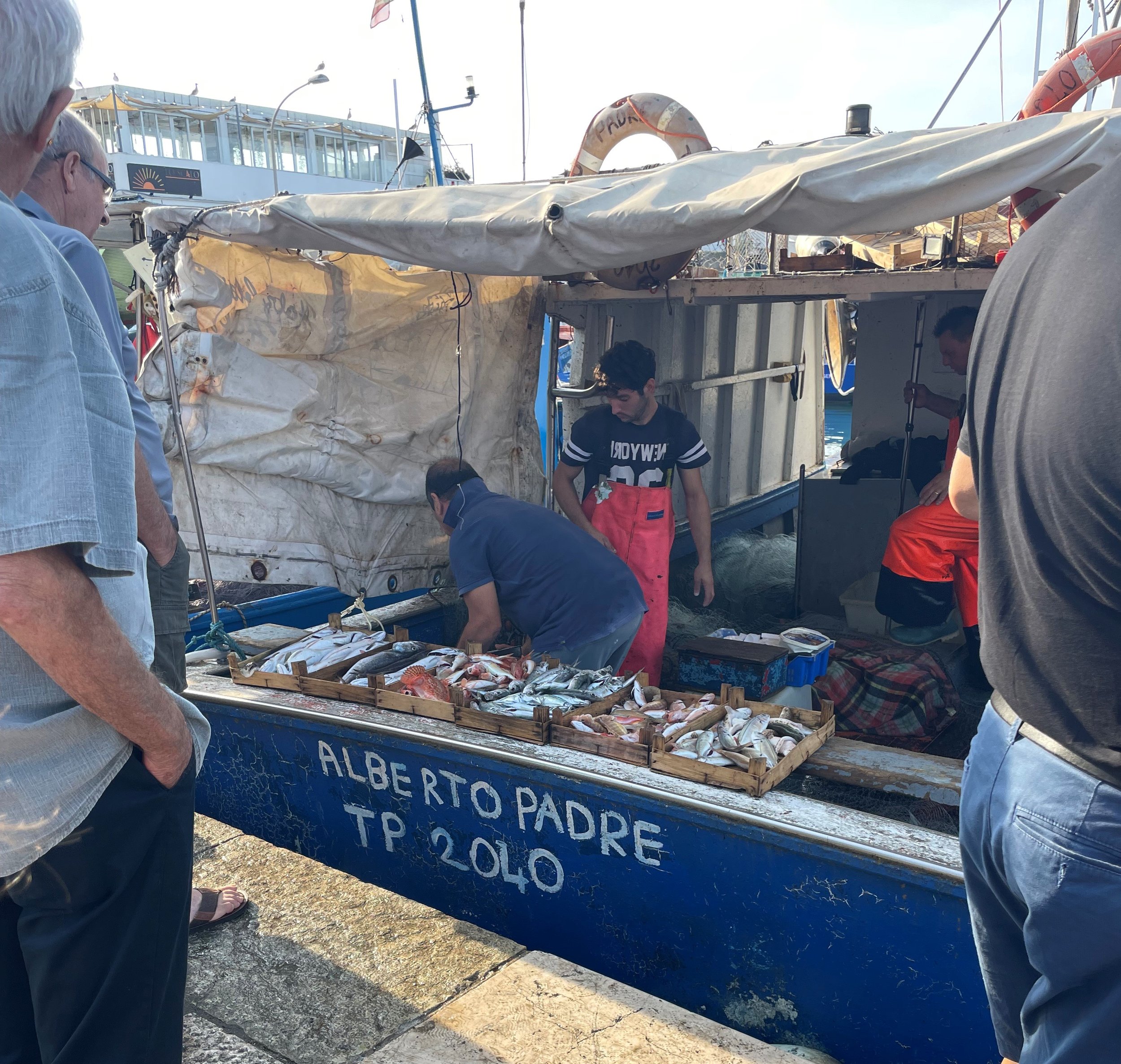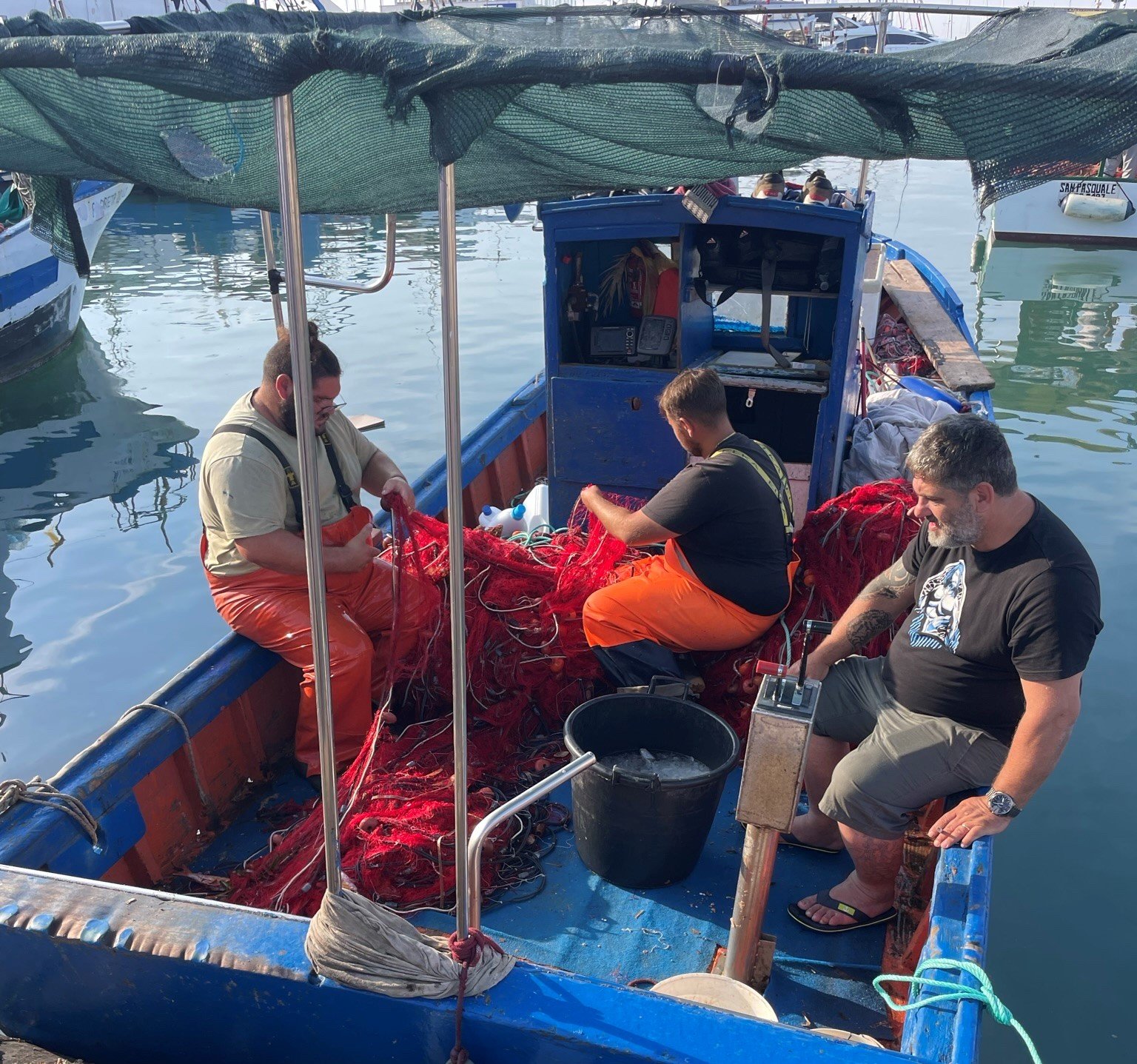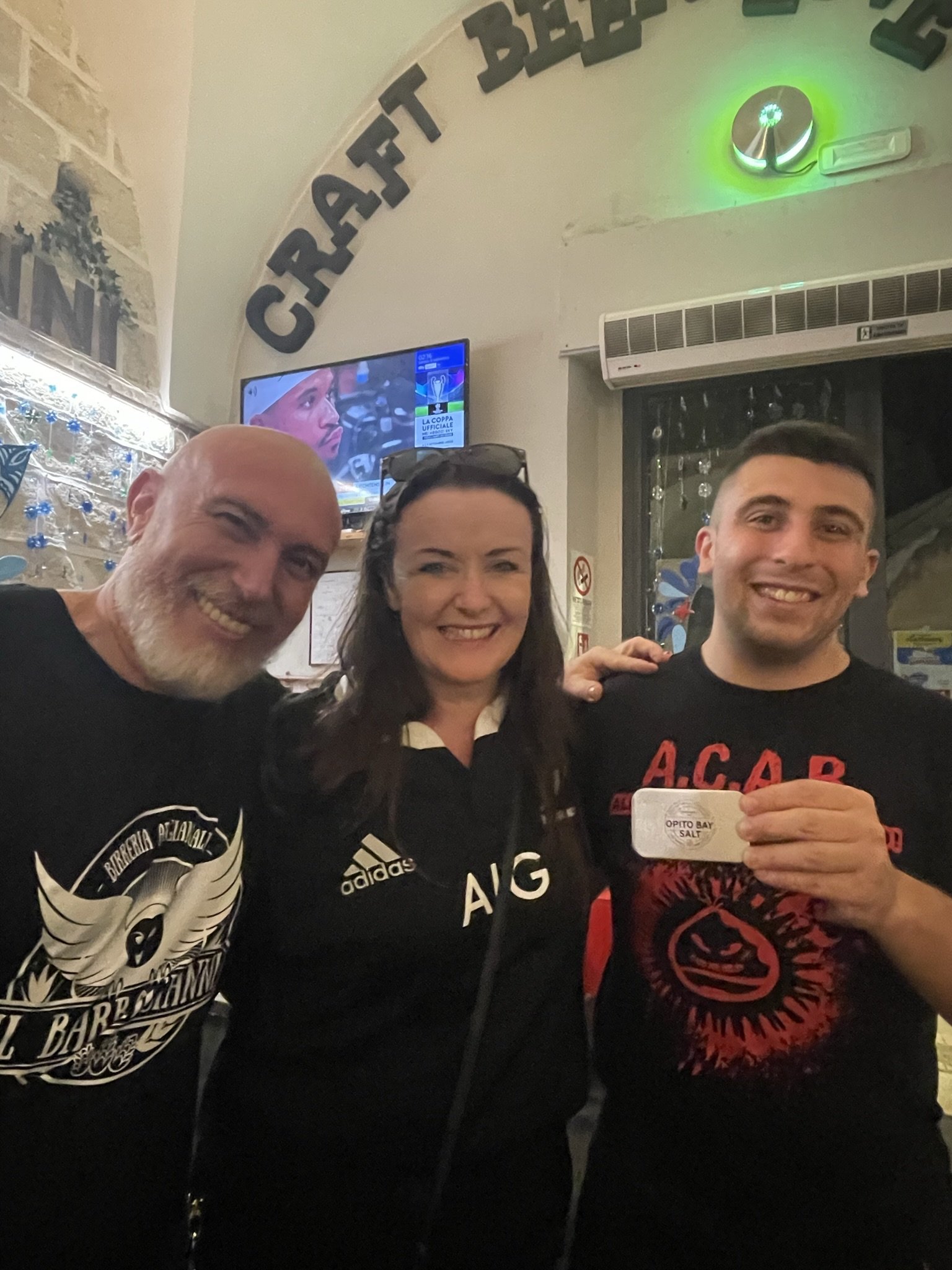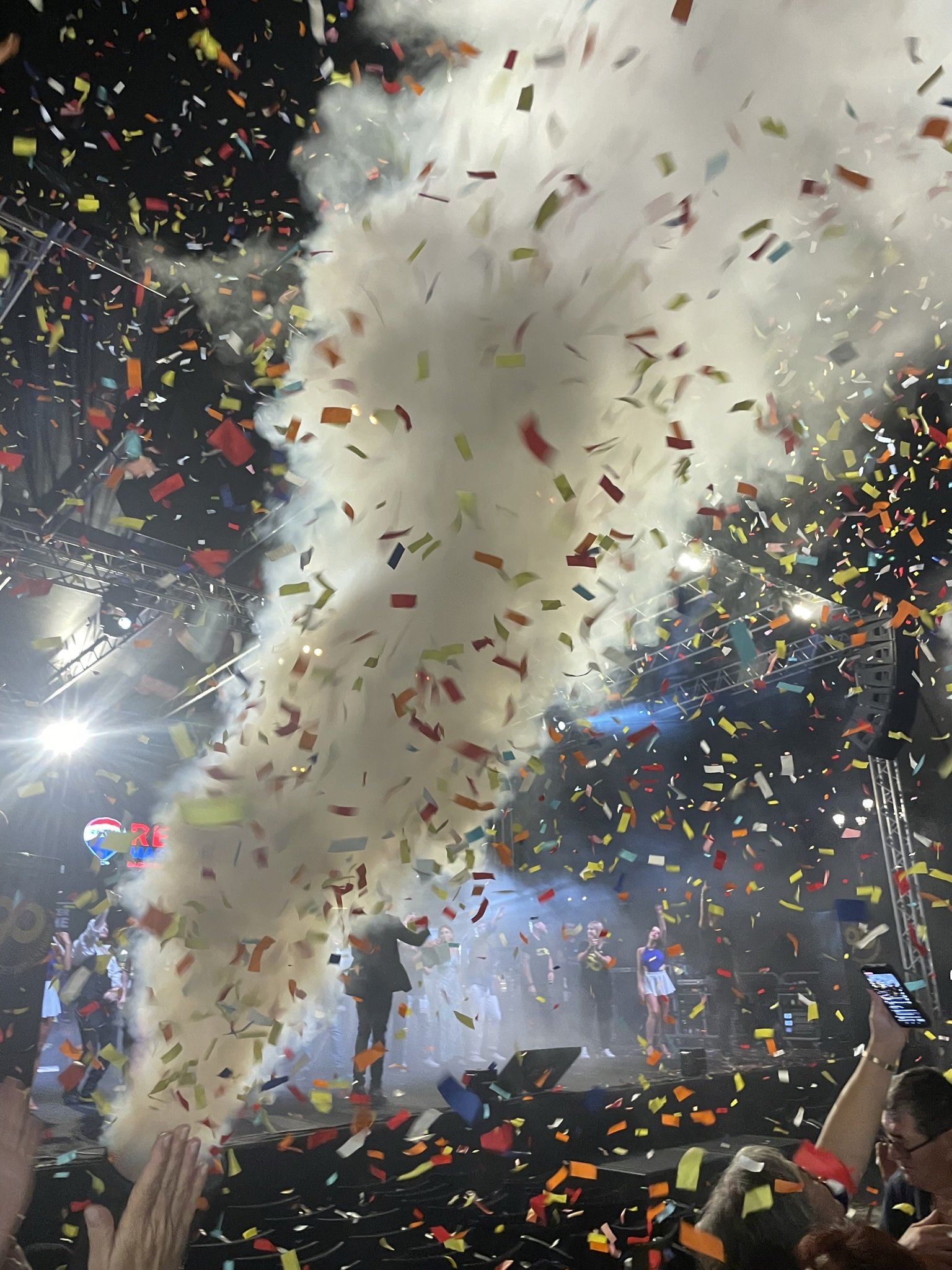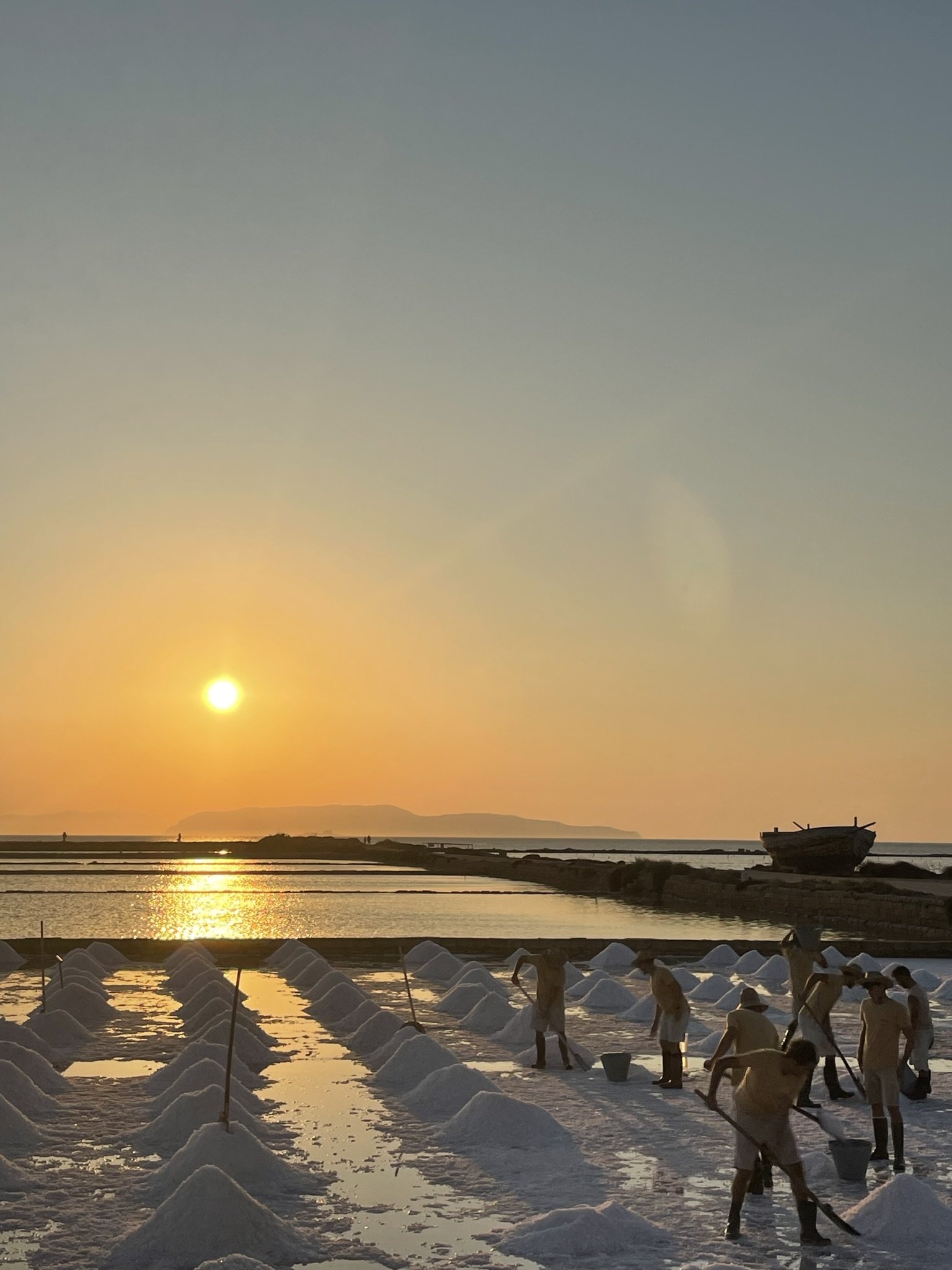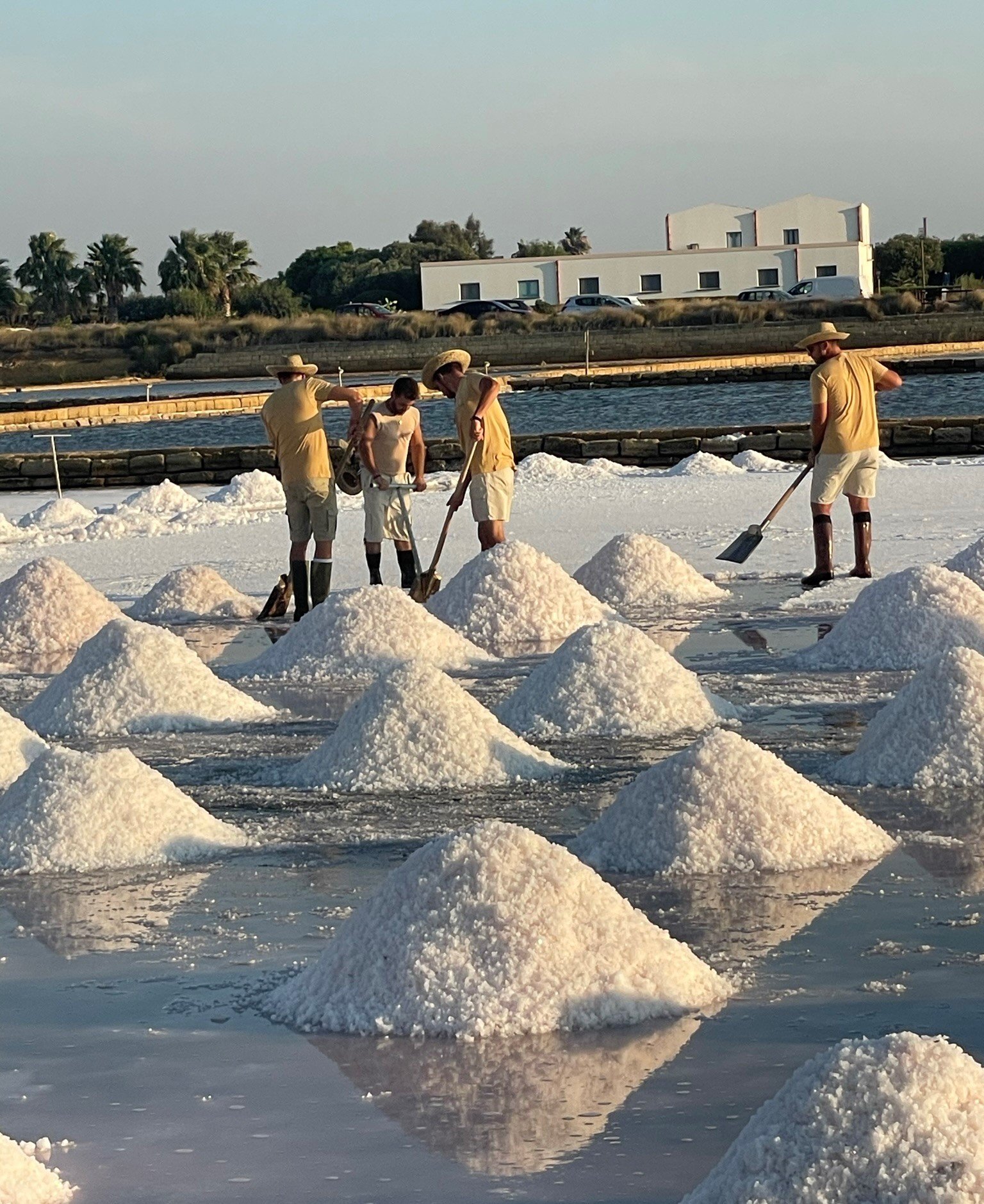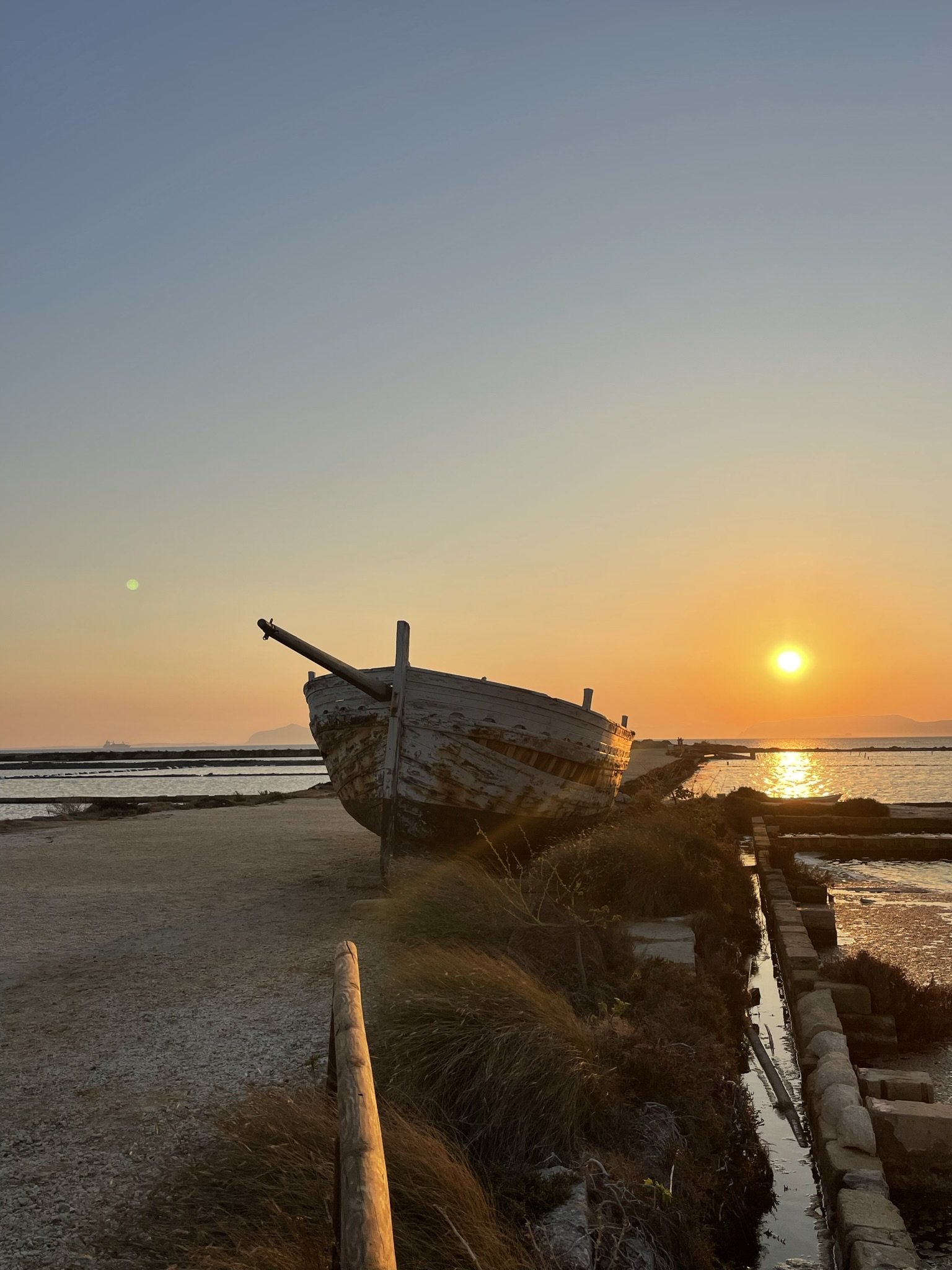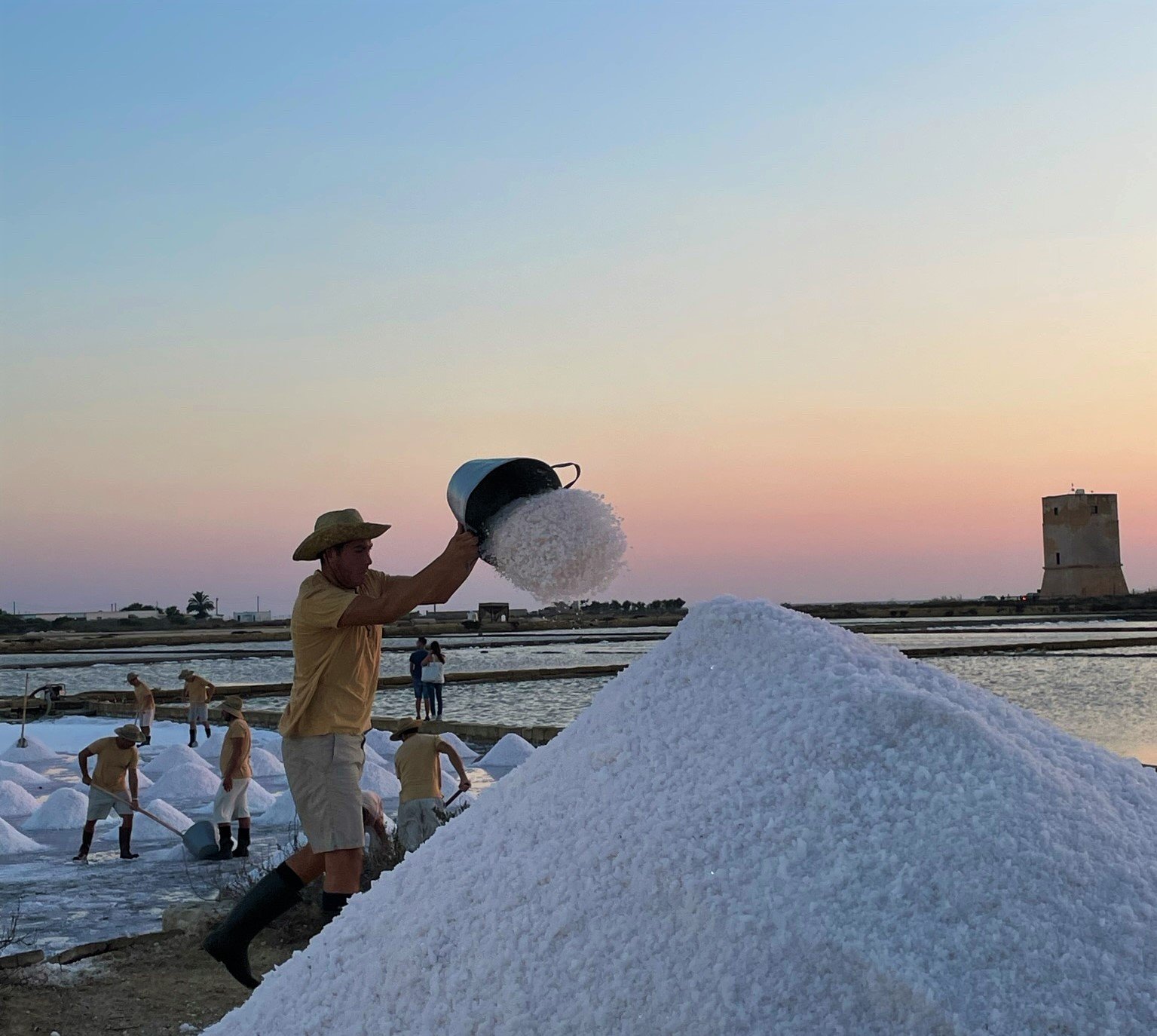Tripping in Trapani
We flew down from Bologna to Trapani in Sicily. What a stark contrast. The light changed as did the buildings. Everywhere the bleached and washed out colours of the Southern Mediterranean, golden and sand tinged sunlight was the only filter to the punishing heat. Barren hills and jagged mountains loomed over small towns and settlements nestled next to an azure blue sea. Stunningly different to Tuscany and utterly gorgeous at the same time.
We were headed to Trapani for some well deserved R and R but also to meet the fellows at Saline Culcasi a 4th generation salt making family who still work the ancient salt pans just out side the city. They say Trapani is famous for salt, churches and cous cous. The old city is unbelievably beautiful, churches around every corner in the middle of densely packed streets where 4 floors up you can literally gather your neighbours washing in for them. The smells of a fishing port were ever present and ferries to the nearby islands of Favignana and Levanzo jostled for priority with small fishing ketches. At its closest point Tunisia in North Africa is a mere 72 kms away and there is a definite North African feel to the look and smells of this delightful port and walled city.
Trapani itself used to be an island. A fortress was built there by the Carthaginians in 260 BC. The island was surrounded by salt marshes and these where transformed over centuries into salt pans and hence the business of salt. In these acient times salt was important for many things such as preserving food and typically a tightly controlled commodity. The hot winds, sunshine and flat land next to the sea made it the perfect place to cultivate sea salt.
Trapani
We decided to hit up our “about to be” new salty friends Davide and his Brother Umberto early in our stay. You never know when you reach out from NZ what kind of reception awaits and the few Whatsapp and email messages - using google translate never fill us with tremendous confidence.
Saline Culcasi is one of the better known salt houses. They have developed a salt museum and guided walks of the salt pans which are now part of a UNESCO world heritage site called “Reserva del Mare”. This family business is 100% Sicilian. One Cousin runs the wonderful trattoria and cafe on site. An uncle owns the adjacent Hotel which is famous for salt baths and bird watching-Flamingos in this natural habitat being a big draw card. Then there’s more cousins that work on the salt farm itself or museum or shop. There are Cousins everywhere!
Flamingoes near salt pan
Trapani itself being a peninsula has a windy side or calm side depending on the weather. The salt pans are always windy. We jumped from the the taxi taking us to meet the crew at Saline Culcasi and immediately you started to get some idea of what living and working these salt pans is like. Hot, back breaking work in a super heated wind tunnel.
Sara our initial guide took us through the salt pans (as Davide had to quickly fix a pump that had just stopped working) and expertly explained the process. 45 days from the introduction of sea water to the harvesting of sea salt. Pretty incredible! 4 distinct phases to the evaporation process take place but each is finely calibrated by a master salinere to ensure that the concentration of the brine is at the perfect level before the water is moved to the next pan. Later Davide showed me his hydrometer but he said that the feel of the water and the amount of foam were better indicators than the instruments.
After a good walk around the pans with Sara we had time to visit the museum de sale and learn more of the back story to the history of the salt pans, why the landscape is dotted with stone Meulins (windmills) which drive Archimedes screws to move water from one pan to another and previously, were also used to grind the finished sea salt to finer grades.
A tour had turned up and Sara was dispatched to look after them but luckily Davide was back and crisis averted. Pump back on-line! Davide is one cool cat! He and his brother took over the business only two years ago after the tragic passing away of their father who developed Saline Culcasi from salt farm to Museum and trattoria. He was also instrumental in helping preserve the traditions and habitat of the salt pans.
[As an aside the majority of new Trapani and environs has been built on land which were previously salt pans.]
We shared the rest of the morning talking sea salt with Davide looking at more of his salt pans which produce salt for roads in the snowy North of Italy and commercial sea salt for the curing high quality olives which Sicily is famous for. After coffee, water and an exchange of salt and we were invited back for the sea salt harvest festival at the end of the week! Perfecto! An opportunity to meet some of the workers who still harvest sea salt by hand and hear the traditional chants of the salt worker whilst enjoying a glass or 7 of “Grillo” the delicious Sicilian white wine and some busiate - long twisted pasta unique to Trapani.
So before we got to the fiesta we had more work to do. Explore the fish market, check out the artisan products for sale, visit inland and up the coast to see for ourselves the groves of olives, vineyards and small formaggiaio (cheese maker) where we had the opportunity to meet a formaggiaio in an Agritourism business. So the next day we did just that. Hired a scooter and set off into the hinterland returning via the coast for a well deserved dip in the ocean.
Sicilian Cheese
We had a great day out, wine, cheese and olives. But serious business was due the next day. All Blacks first world cup game and a second visit to the fish market and fishing port where every day they can get out, fishermen on small boats sell there evenings catch from the back of the boat.
This tradition an economic necessity, draws a crowd and most mornings I visited there was a group of up to 15 elderly gents discussing the merits of each boats catch and choosing what they believed the prime catch of the day for there own table.
Suffice to say the evenings game came around soon enough but not without dinner. We ate so much great sea food whilst in Trapani its hard to know where to start. Fried sardines and calamari, anchovies and sardine pasta, mussels and sea food cous cous…etc
There’s no point talking about the game, but afterwards we did meet some new salty fans, catch the local seafood festival and obligatory open air 90’s rave…Only in Sicily!
The fiesta at Saline Culcasi was a buzz. At sunset, music drifted across the salt pans. The current harvest was taking place and about 12 burly twenty somethings harvested sea salt and then ran it up wooden planks to deposit salt in a larger heap, later to be covered in clay tiles to protect it from the elements. The two brothers also rope in family plus, the local artisan community turn up to sell everything from local garlic to hand made iron trinkets. Aunts and Uncles all help out producing mountains of food and with keeping the whole mood flying. Locals turn up to enjoy this hospitality and everyone mucks in on giant shared tables.
Harvest Festival
Italy’s a great place and super fun to visit but I think I left a little piece of my heart in Sicily. They are big, generous, warm hearted people. There are stunning vistas of sea and mountains. The harsh landscape gives birth to beautiful outstanding produce. The traditions and history. This isn’t the end of our salty journey-just another beginning. We’ll see you soon Sicily but for now we need to head back to NZ and start our salty summer.
